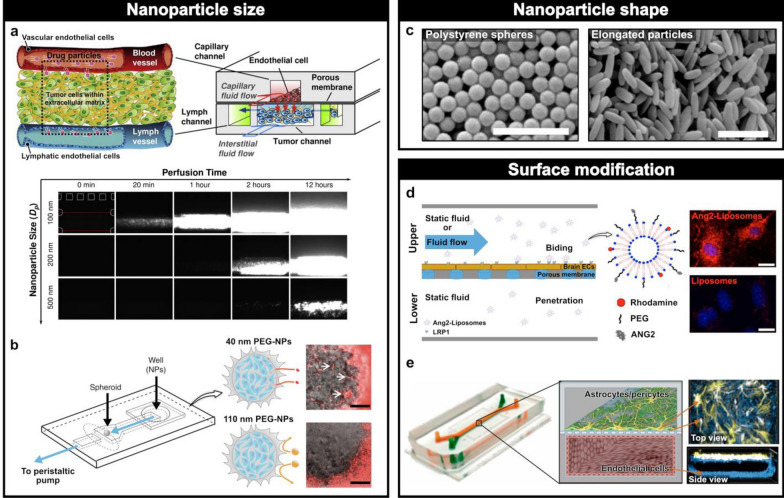Fig. 2.
Effect of nanoparticle physicochemical properties. a A microengineered breast cancer tumor model mimicking the blood vessels, tumor tissue, and lymph vessels through three different types of channels demonstrated the correlation between smaller nanoparticle sizes and increased translocation across a porous membrane. b A tumor-on-a-chip model to assess nanoparticle accumulation at a tumor spheroid. Small particles were able to accumulate at the spheroids, whereas larger ones could not. Scale bars, 100 µm. c When anti-intracellular adhesion molecule-1 (ICAM) and immunoglobulin G antibody (IgG) coated nanorods and spheres were flown across a microfluidic device, nanorods demonstrated enhanced targeting and greater attachment to an endothelial monolayer compared to spheres. Scale bars, 1 µm. d A blood brain barrier (BBB) model with two overlapping channels separated by a porous membrane showed greater binding of liposomes modified with Angiopep-2 (Ang-2) to endothelial cells than non-functionalized ones. Scale bars, 10 µm. e A similar human BBB on-chip with human brain astrocytes and pericytes in the upper, central nervous system (CNS) compartment and brain-like microvascular endothelial cells in the lower, brain microvasculature compartment indicated an enhanced ability of Ang-2-coated quantum dots (QDs) to move across the CNS channel without affecting the barrier integrity compared to non-modified QDs

